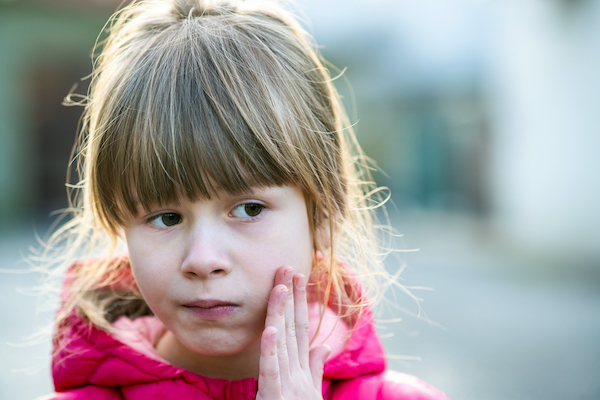 Injuries to the head, face, and mouth are common in young children. Parents and Head Start staff play an important role in preventing oral injuries. See the Brush Up on Oral Health tip sheet, Preventing Oral Injuries, to learn more about preventing these injuries. However, even when parents and staff do their best to keep children safe, oral injuries can happen.
Injuries to the head, face, and mouth are common in young children. Parents and Head Start staff play an important role in preventing oral injuries. See the Brush Up on Oral Health tip sheet, Preventing Oral Injuries, to learn more about preventing these injuries. However, even when parents and staff do their best to keep children safe, oral injuries can happen.
This Brush Up on Oral Health tip sheet identifies supplies to include in a first aid kit for treating oral injuries. It also explains how to give first aid for the five most common oral injuries that happen to young children with primary (baby) teeth.
First Aid Supplies for Responding to Oral Injuries
It is important that first aid kits in Head Start programs have supplies for responding to oral injuries. Here are some items to include:
- Instructions on how to assess and provide first aid for oral injuries.
- Non-latex gloves to wear while inspecting or cleaning the injured area.
- Clean gauze and cotton swabs to stop bleeding and clean the injured area.
- Floss to remove anything stuck between teeth to relieve pain.
- Clean cloth for wrapping ice or instant cold ice packs to put on the injured area to reduce swelling.
- Plastic bags to dispose of biohazard waste, like blood-soaked gauze or gloves.
- Phone number for the child’s dentist in case of a dental emergency, like a tooth knocked loose or pushed into the gum.
- Emergency medical service phone numbers (911 or 9-911) for a medical emergency, like a child who is unconscious or has trouble breathing or has bleeding that can’t be stopped.
Giving First Aid for Oral Injuries

If a child has an oral injury, keep the child as calm as you can and assess the type of injury:
- Tongue or lip injured. Injured tongues or lips often bleed a lot. Clean the injured area and press a clean piece of gauze or a cotton swab on it to stop the bleeding. Also, keep the child’s head up and facing forward to prevent choking. Put ice wrapped in a clean cloth on the area to reduce swelling. If bleeding doesn’t stop after 30 minutes, contact the child’s parents and take the child to the dentist, doctor, or nearest urgent care center immediately.
- Tooth chipped or cracked. If a child’s tooth is chipped or cracked, contact the child’s parents and dentist immediately. Quick action can prevent infection and reduce the amount of treatment needed to fix the tooth. Clean the injured area. If the child can rinse, have the child rinse with water. Press a clean piece of gauze or a cotton swab on the gum around the tooth to stop any bleeding. If there are other injuries around the mouth, apply ice wrapped in a clean cloth on the area to reduce swelling.
- Tooth knocked out. If a tooth is knocked out, check the child’s health record to determine if it’s a primary tooth or a permanent tooth. Permanent teeth usually appear between ages 6 and 8. If it’s a primary tooth, contact the child’s parents and dentist immediately. Do not try to put the tooth back into the mouth. Doing this may damage the permanent tooth underneath. Clean the injured area. If there is bleeding, have the child bite on a clean piece of gauze on the area for 15 to 30 minutes to stop it. If there are other injuries around the mouth, apply ice wrapped in a clean cloth on the area to reduce swelling. If a child’s permanent tooth is knocked out, see the American Academy of Pediatric Dentistry’s instructions.
- Tooth knocked loose, moved, or pushed into the gum. If a child’s tooth has been knocked loose, moved forward or backward, or pushed into the gum, contact the child’s parents and dentist immediately. Ask the dentist if the child needs to be seen. If the child can rinse, have the child rinse with water. Press a clean piece of gauze or a cotton swab on the gum around the tooth to stop bleeding. If there are other injuries around the mouth, put ice wrapped in a clean cloth on the area to reduce swelling.
- Toothache. If a child has a toothache, it is likely that the tooth is decayed. An appointment should be made as soon as possible for a dentist to assess the problem and treat it.
Download a PDF version to print and share.
Read more:
Resource Type: Article
National Centers: Health, Behavioral Health, and Safety
Audience: Teachers and Caregivers
Series: Brush Up on Oral Health (BUOH)
Last Updated: April 26, 2023
